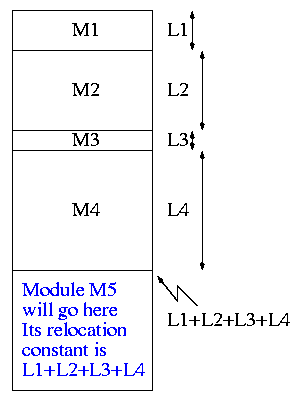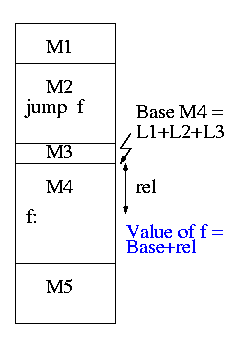
I start at -1 so that when we get to chapter 1, the numbering will agree with the text.
There is a web site for the course. You can find it from my home page, which is http://cs.nyu.edu/~gottlieb
The course text is Tanenbaum, "Modern Operating Systems", 2nd Edition
Grades will computed as
(30%)* MidtermExam + (30%)*LabAverage + (40%)*FinalExam
(but see homeworks below).
I use the upper left board for lab/homework assignments and announcements. I should never erase that board. Viewed as a file it is group readable (the group is those in the room), appendable by just me, and (re-)writable by no one. If you see me start to erase an announcement, let me know.
I try very hard to remember to write all announcements on the upper left board and I am normally successful. If, during class, you see that I have forgotten to record something, please let me know. HOWEVER, if I forgot and no one reminds me, the assignment has still been given.
I make a distinction between homeworks and labs.
Labs are
Homeworks are numbered by the class in which they are assigned. So any homework given today is homework #1. Even if I do not give homework today, the homework assigned next class will be homework #2. Unless I explicitly state otherwise, all homeworks assignments can be found in the class notes. So the homework present in the notes for lecture #n is homework #n (even if I inadvertently forgot to write it to the upper left board).
You may solve lab assignments on any system you wish, but ...
Good methods for obtaining help include
The department wishes to reinforce the knowledge of C learned in 201. As a result, lab #2 must be written in C. The other labs may be written in C or Java. C++ is permitted (and counts as C for lab2); however, C++ is a complicated language and I advise against using it unless you are already quite comfortable with the language.
It is university policy that a student's request for an incomplete be granted only in exceptional circumstances and only if applied for in advance. Naturally, the application must be before the final exam.
Originally called a linkage editor by IBM.
A linker is an example of a utility program included with an operating system distribution. Like a compiler, the linker is not part of the operating system per se, i.e. it does not run in supervisor mode. Unlike a compiler it is OS dependent (what object/load file format is used) and is not (normally) language dependent.
Link of course.
When the compiler and assembler have finished processing a module,
they produce an object module
that is almost runnable.
There are two remaining tasks to be accomplished before object modules
can be run.
Both are involved with linking (that word, again) together multiple
object modules.
The tasks are relocating relative addresses
and resolving external references.


The output of a linker is called a load module because it is now ready to be loaded and run.
To see how a linker works lets consider the following example, which is the first dataset from lab #1. The description in lab1 is more detailed.
The target machine is word addressable and has a memory of 250 words, each consisting of 4 decimal digits. The first (leftmost) digit is the opcode and the remaining three digits form an address.
Each object module contains three parts, a definition list, a use list, and the program text itself. Each definition is a pair (sym, loc). Each entry in the use list is a symbol and a list of uses of that symbol.
The program text consists of a count N followed by N pairs (type, word), where word is a 4-digit instruction described above and type is a single character indicating if the address in the word is Immediate, Absolute, Relative, or External.
Input set #1 1 xy 2 2 z xy 5 R 1004 I 5678 E 2000 R 8002 E 7001 0 1 z 6 R 8001 E 1000 E 1000 E 3000 R 1002 A 1010 0 1 z 2 R 5001 E 4000 1 z 2 2 xy z 3 A 8000 E 1001 E 2000
The first pass simply finds the base address of each module and produces the symbol table giving the values for xy and z (2 and 15 respectively). The second pass does the real work using the symbol table and base addresses produced in pass one.
Symbol Table
xy=2
z=15
Memory Map
+0
0: R 1004 1004+0 = 1004
1: I 5678 5678
2: xy: E 2000 ->z 2015
3: R 8002 8002+0 = 8002
4: E 7001 ->xy 7002
+5
0 R 8001 8001+5 = 8006
1 E 1000 ->z 1015
2 E 1000 ->z 1015
3 E 3000 ->z 3015
4 R 1002 1002+5 = 1007
5 A 1010 1010
+11
0 R 5001 5001+11= 5012
1 E 4000 ->z 4015
+13
0 A 8000 8000
1 E 1001 ->z 1015
2 z: E 2000 ->xy 2002
The output above is more complex than I expect you to produce it is there to help me explain what the linker is doing. All I would expect from you is the symbol table and the rightmost column of the memory map.
You must process each module separately, i.e. except for the symbol table and memory map your space requirements should be proportional to the largest module not to the sum of the modules. This does NOT make the lab harder.
(Unofficial) Remark: It is faster (less I/O) to do a one pass approach, but is harder since you need “fix-up code” whenever a use occurs in a module that precedes the module with the definition.
The linker on unix was mistakenly called ld (for loader), which is unfortunate since it links but does not load.
Historical remark: Unix was originally developed at Bell Labs; the seventh edition of unix was made publicly available (perhaps earlier ones were somewhat available). The 7th ed man page for ld begins (see http://cm.bell-labs.com/7thEdMan).
.TH LD 1 .SH NAME ld \- loader .SH SYNOPSIS .B ld [ option ] file ... .SH DESCRIPTION .I Ld combines several object programs into one, resolves external references, and searches libraries.By the mid 80s the Berkeley version (4.3BSD) man page referred to ld as "link editor" and this more accurate name is now standard in unix/linux distributions.
During the 2004-05 fall semester a student wrote to me “BTW - I have meant to tell you that I know the lady who wrote ld. She told me that they called it loader, because they just really didn't have a good idea of what it was going to be at the time.”
Lab #1: Implement a two-pass linker. The specific assignment is detailed on the class home page.